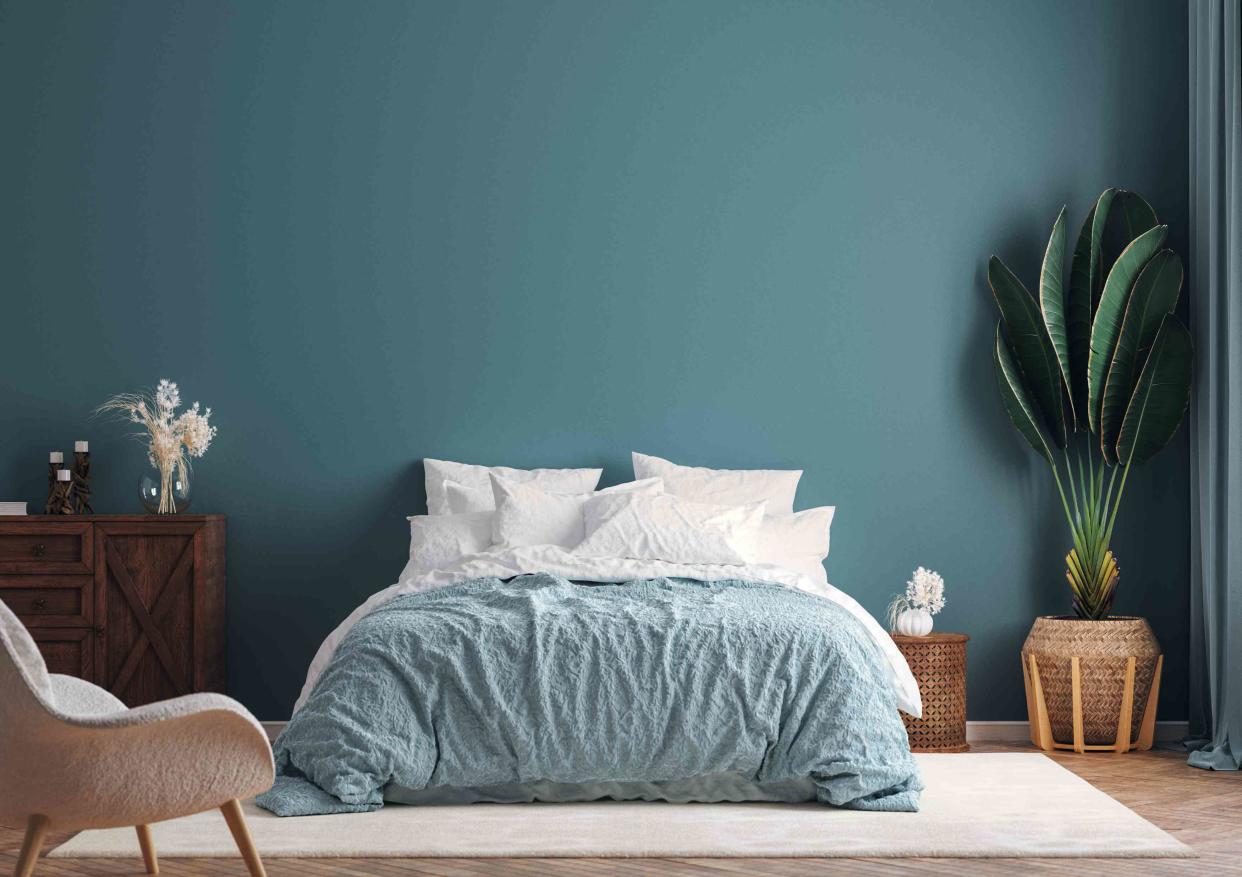Do Cooling Sheets Really Work? A Sleep Expert Explains the Science
It's safe to say it's not the placebo effect.

Artjafara/Getty Images
If you’ve ever slipped under the covers—and a set of cooling sheets—on a sticky, hot night, you know the singular magic of these bed linens. Cooling sheets are a wonder of modern technology, helping hot sleepers and hot-weather sleepers alike drift off at an agreeable temperature.
But how do cooling sheets actually work? Ahead, find the science behind cooling sheets, and what you need to know before investing in a set.
Related: We Tested Over 235 Cooling Sheets—Here Are the Top 9 We Loved
Meet Our Expert
Natalie Dautovich, PhD, an environmental fellow at the National Sleep Foundation
Katie Elks, design director at Brooklinen
How Cooling Sheets Work
Cooling sheets do two main things to help sleepers from becoming too toasty: They allow air flow through their fabric and they wick moisture away from the body. “This airflow and moisture regulation can prevent you from feeling too hot and sweaty, keeping you comfortable throughout the night,” explains Natalie Dautovich, PhD, an environmental fellow at the National Sleep Foundation.
Since cooling sheets dry quickly, they help you feel cooler than traditional weaves. They’re typically lightweight and breathable, too, assisting your body in thermoregulation anytime temps rise, whether that’s external (like in summertime) or internal (like when you have a fever).
So do cooling sheets really work? In a word, yes. Cooling sheets do indeed keep sleepers at lower body temperatures compared to traditional sheets, thanks to moisture-wicking properties and breathability.
Related: 7 Possible Reasons Why You're Getting Night Sweats—and How to Find Some Relief
Are Cooling Sheets Good for Everyone?
Cooling sheets are a solid investment for anyone who wants to stay cool at night time, whether you’re a hot sleeper or are simply sleeping in hot weather.
“Cooling sheets can be particularly beneficial for hot sleepers, those who tend to sweat during the night, or people experiencing hot flashes,” says Dautovich. “Additionally, individuals living in warm climates or those who prefer to keep their bedroom temperature on the cooler side can also benefit from cooling sheets.”
Keeping cool at night can help you fall asleep—and stay asleep—in general. “In certain scenarios, they can also help to prevent the need for insomnia medications because the solution may just be optimal temperature during sleep,” writes Dr. Maryam Syed, who practices family medicine at Hartford HealthCare Medical Group, in a blog post
Cooling sheets are only one part of a healthy sleep environment, points out Dautovich. Creating a space that’s dark, quiet, and cool will help achieve maximum cooling benefits.
Factors for Picking the Best Cooling Sheets
Materials
Fabric material is one of the most important factors in a successful set of cooling sheets. Dautovich suggests looking for sheets made of cotton, linen, or bamboo, which can help regulate your body’s temperature by allowing for heat dissipation.
Cotton: Brooklinen’s Classic Percale Sheets were the first product the company offered in 2014, and have become a cult-favorite for hot sleepers over the past decade. They’re a classic example of cotton sheets with cooling properties, thanks to their weave. “Our Classic Sheets, which are a cotton percale weave, have a crisp, cool feel to the touch,” explains Katie Elks, Brooklinen’s design director. “Percale is a plain weave, which results in a crisp, matte finish reminiscent of fresh hotel sheets.”
Linen: Linen sheets are some of the most breathable fibers you can buy. “Linen fibers have unique moisture-wicking properties that make your sheets feel even cooler than cotton,” says Elks. “As with any linens, you should opt for quality fabrics made with long-staple cotton, resulting in a smooth and durable product.”
Bamboo: Bamboo sheets are typically made of either viscose, rayon, or lyocell, all fabrics derived from bamboo fibers. They’re not only soft to the touch but often cool to the touch because of their breathability. Some sleepers choose bamboo over linen and cotton for its durability: Bamboo sheets can last for over a decade when cared for properly.
Breathability
Cooling sheets should be extra breathable for maximum air ventilation, which is where thread counts come in. In this case, higher is not always better. “Consider the thread count, which should ideally be above 200 for a balance of durability and softness,” says Dautovich.
However, steer clear of sheets above a thread count of around 400 if you want to stay cool, as higher thread counts mean the fabric has a tighter weave. Ideally, you’re aiming for a looser weave that breathes, so plenty of air can get through.
Moisture-Wicking Properties
If you tend to sweat while you’re sleeping, cooling sheets with moisture-wicking properties—like cotton, bamboo, and linen varieties—can help keep you dry. They work by drawing moisture to the outer surface of the fabric (and away from the skin), allowing it to dry quickly. The result is a set of sheets that doesn’t remain soaked with sweat over the course of the night.
What are the Benefits of Cooling Sheets?
Like their name suggests, cooling sheets keep sleepers cool and comfortable. But their benefits go beyond simply staying cool. A study published in “Frontiers in Neuroscience” suggests that sleeping at cooler temperatures leads to a deeper sleep—and better sleep translates to a healthier you.
Related: How to Fall Back Asleep After Waking Up at Night
For more Real Simple news, make sure to sign up for our newsletter!
Read the original article on Real Simple.
